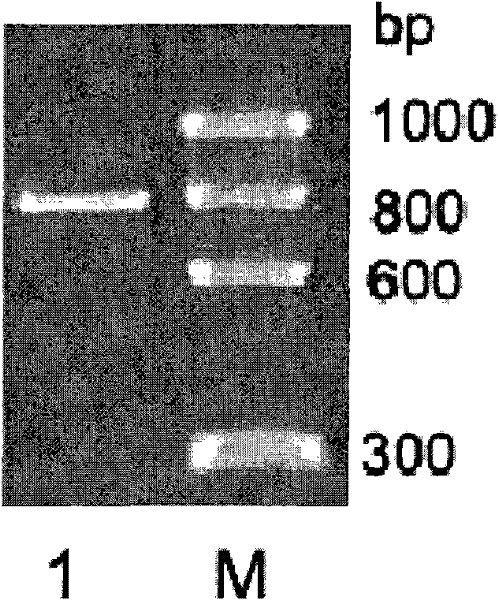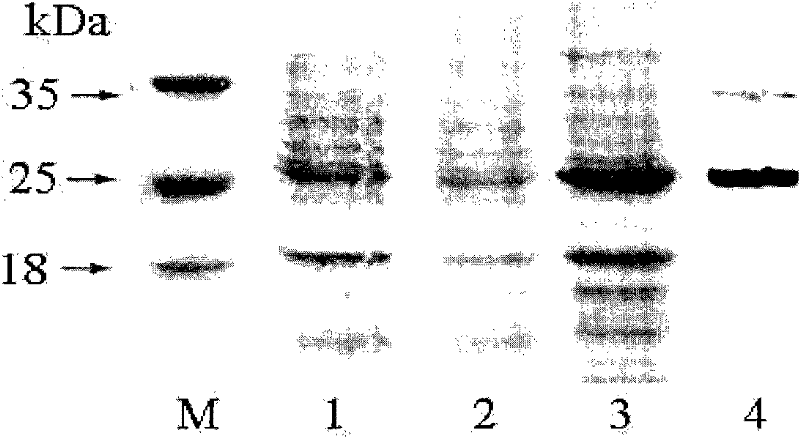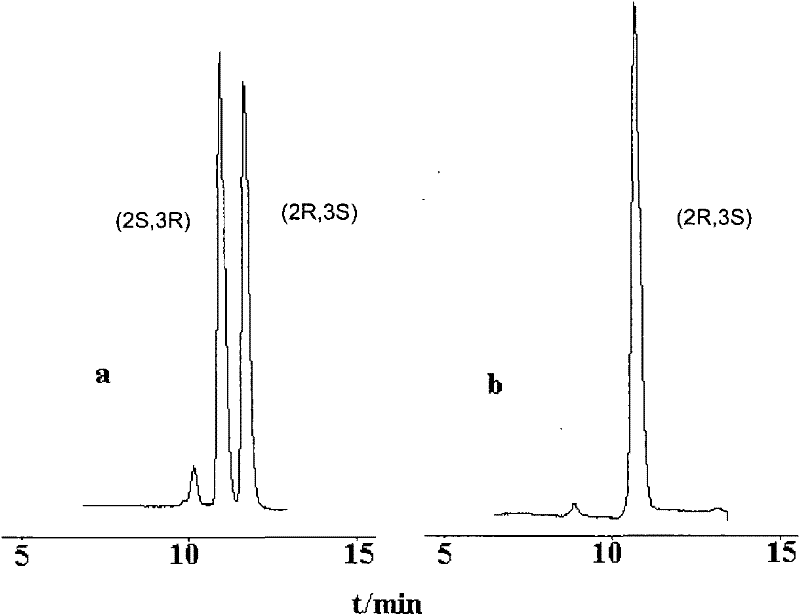Esterase with racemic phenyl glycidyl ester split activity, encoding gene and application thereof
A technology for encoding glycidyl ester and esterase, which is applied in the field of enzyme engineering and can solve the problems of loss of target optical product and reduction of product optical activity.
- Summary
- Abstract
- Description
- Claims
- Application Information
AI Technical Summary
Problems solved by technology
Method used
Image
Examples
Embodiment 1
[0034] The acquisition of the esterase MHest gene of embodiment 1 of the present invention
[0035] (1) Establishment and screening of genomic plasmid library of Microbacterium liquefaciens
[0036] Purchase the strain amp tube of Microbacterium liquefaciens 1.1934 at the China Common Microorganism Culture Collection and Management Center, break the mouth of the tube and add 1mL liquid nutrient gravy agar medium (peptone 10g / L, beef extract 3g / L L, NaCl 5g / L, distilled water 1L, pH7.0), and then the suspension of the bacterial strain was inserted into 100mL of the same medium for culture, the shaker condition was 220 rpm, 30°C, 48 hours. After the cultivation was completed, the bacteria were collected by centrifugation at 12000 rpm.
[0037] Genomic DNA from Microbacteria liquefaction was purified and extracted using a bacterial genome extraction kit (Shanghai Sangong), and the operation method was carried out according to the instructions provided by the kit. The genomic DN...
Embodiment 2
[0049] Embodiment 2 recombinant protein expression and purification
[0050] The constructed plasmid pETMHest was introduced into Escherichia coli E.coil BL21(DE3) by electrotransformation method to obtain transformant E.coil BL21(pETMHest). Inoculate the transformant into a test tube of LB liquid medium (containing kanamycin), culture overnight at 37°C, and transfer to 400 mL of LB liquid medium (containing kanamycin) at a transfer rate of 1%. , cultured at 37°C, and when the OD value was 0.6-0.8, IPTG with a final concentration of 1 mM was added for induction culture for 3 hours, and the cells were collected by centrifugation. Suspend the bacteria in the binding buffer (50mM TrisHCl, 20mM imidazole, 50mMNaCl, pH8.0,), perform ultrasonic disruption (300W, ultrasonic 3 seconds, 1 second interval, 90 cycles in total), centrifuge at 14000RPM, and collect the supernatant solution, the supernatant was added to 1mL nickel affinity column (Novogen), combined with 5mL wash buffer (5...
Embodiment 3
[0052] The immobilization of embodiment 3 esterase
[0053] The purified protein was immobilized by sodium alginate method. The immobilization method was as follows. Add 0.3 g of sodium alginate (purchased from Bailingwei Company) to 10 mL of water and heat it to 121 ° C to completely dissolve it. Cool to 30°C, add esterase dissolved in pH 7.0 phosphate buffer solution, the concentration of the esterase in the sodium alginate solution is 4g / L, stir the mixture slightly to mix, carefully inject the mixture with a syringe Drop into ice-cold 0.1mol / L CaCl 2 1.5mol / L boric acid solution, the sodium alginate and CaCl 2 The molar ratio of the immobilized enzyme was controlled at 23:10, and the immobilized enzyme was suspended in the above boric acid solution for 3 hours, keeping the temperature at 4°C. After immobilization, the immobilized enzyme was collected by filtration, washed with distilled water and stored in a refrigerator at 4°C.
PUM
| Property | Measurement | Unit |
|---|---|---|
| molecular weight | aaaaa | aaaaa |
| optical purity | aaaaa | aaaaa |
| optical purity | aaaaa | aaaaa |
Abstract
Description
Claims
Application Information
 Login to View More
Login to View More - R&D
- Intellectual Property
- Life Sciences
- Materials
- Tech Scout
- Unparalleled Data Quality
- Higher Quality Content
- 60% Fewer Hallucinations
Browse by: Latest US Patents, China's latest patents, Technical Efficacy Thesaurus, Application Domain, Technology Topic, Popular Technical Reports.
© 2025 PatSnap. All rights reserved.Legal|Privacy policy|Modern Slavery Act Transparency Statement|Sitemap|About US| Contact US: help@patsnap.com



